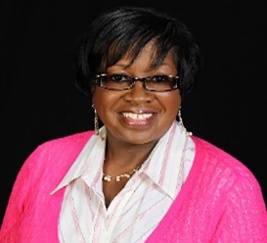“But we have this treasure in earthen vessels that the excellence of the power may be of God and not of us. We are hard-pressed on every side, yet not crushed; we are perplexed, but not in despair; persecuted, but not forsaken; struck down, but not destroyed.” (2 Corinthians 4:7-9)
The power of God’s love can be found in the lyrics of a song written by Hal David (1965) that suggests that “What the world needs now is love, sweet love, it’s the only thing there is just too little of, no not just for some but for everyone.” The message in this song holds the same truth today as it did fifty years ago.
As a nation, we have made this simple concept an enigma leaving us more and more disengaged with the plight of our brothers. We have abandoned our position of “all for one, and one for all” for a position of self-interest and a “me-first” mentality. Morals and values that we once held as sacred in guiding our behavior and decisions are now regarded as acts of discrimination.
There is hope. There is a beacon of light that continues to shine, and as long as we have this light, we have hope. Ethical leaders are the light of this world and our only defense in spoiling any further advances by the enemy.
How do we challenge this selfish trend?
Let’s start with the basics: The importance of leadership
Not all leaders are effective in driving change. Leaders that are found to be credible and consistent in their dealings are more apt to rally others around a common goal or purpose. Ethical leadership is a key driver in driving change toward a greater cause. Because leaders tend to attract and retain more of who they are and influence behavior, development activities geared toward ethical competencies should be prioritized over other competencies.
A recent assessment completed by Jack Zenger and Joseph Folkman (2016) concluded that there is a significant correlation in contagious behaviors (good or bad) between high-level managers and their direct reports. Out of the 51 behaviors observed, developing self and others, technical skills, strategy skills, consideration and cooperation, and integrity and honesty, were listed as most contagious. In the making of a leader, integrity and honesty or character is considered the core in which all other elements of leadership radiates from (Zenger & Folkman, 2009, p. 76).
In considering this assessment, organizations stand to benefit greatly by focusing on development activities targeting these behaviors or strengths. This is supported by Clifton and Harter who said: “The more a strength is exercised, the more integrated and stronger it becomes” (Clifton & Harter, 2003, p. 4). Leaders that demonstrate ethical characteristics sets the bar in driving change.
Leadership Competencies: Understanding the importance of ethics
In a recent study conducted by Sunnie Giles, 195 leaders in 15 countries over 30 global organizations were asked to choose the 15 most important leadership competencies from a list of 74. High ethical and moral standards were the top leadership competencies.
Organizations founded upon ethical leadership recognize and reward contributions, encourage collaboration, celebrate and value differences, and are committed to doing what is right. There is nothing more disheartening than deliberate unethical and dishonest practices geared toward advancing self-interest at the expense of others. According to U.S. Representative and educational rights advocate Jabez L.M. Curry:
“a state to prosper must be built on foundations of a moral character, and this character is the principal element of its strength, and the only guaranty of its permanence and prosperity” (Maxwell, 2003, p. 12).
“Ethical leaders strive to create ethical environments even when faced with opposition from superiors and subordinates; they continue to carry out the organization’s mission even in the face of dangers and uncertainty” (Johnson, 2015, p. 81). According to John Maxwell (2003) the golden rule is the most viable approach in guiding behavior. He offers that, “there are really only two important points when it comes to ethics. The first is a standard to follow; the second is a will to follow it” (p. 17). He also gives five opposing forces of the golden rule: pressure, pleasure, power, pride and priorities (pp 58 -68). These forces give energy to the shift in morals and values we are experiencing today.
Call to action
With each generation, we will face a different set of challenges threatening our morals and values. These challenges will require a different set of skills and forward thinking. In leading necessary change in the 21st century, keys to success will depend on how prepared the leader is in managing the following themes.
1. Engagement
In creating a culture of engagement, leaders are the key ingredient. A significant jump in senior leadership engagement was a key finding in AON Hewitt’s report on trends analysis in global employee engagement (Oehler, 2015, p. 8). Strong leaders that are engaged and committed to the business strategy are more likely to be more effective in engaging others and creating a culture of engagement.
“Engaged employees speak positively about the organization to coworkers, potential employees, and customers…” (Oehler, 2015, p. 9). Engaged employees are more likely to stay with the company, strive over and above what is expected of them, and encourage other employees by modeling exemplary behavior
2. Burn-out
Job stress has been recognized as a significant occupational hazard that can impair physical health, psychological well-being, and work performance (Maslach & Leiter, 2008, p.498). Measuring and monitoring health and well-being, illness prevention, stress management, wellness programs, and employee assistance programs are all proactive interventions to improve an employee’s well-being. The benefits are better employee engagement, lower turnover rates, and reduced productivity due to job burnout (Jackson, Schuler, & Werner, 2012).
3. Rest
“When we ignore the need for rest, as part of our work-life integration strategy, our health and performance will eventually suffer" (Hoomans, 2014, p. 1). Rest, which is short for restoration, is a critical source of personal renewal that is often overlooked and undervalued (p. 2). As leaders, there are many voices (e.g., family, work, friends, in-laws, etc.) competing for our attention. Times of rest or renewal such as vacations, spiritual engagement, reflection, hobbies, and solitude are beneficial in maintaining a work-life balance. Recent research by Deloitte & Touche, “seem to suggest that a lack of rest, in the grand scheme of one’s work-life balance formula, could also potentially impact ethical performance among leaders” (Morgan-Olson, 2007).
4. Pruning
“For the right tomorrow to come, some parts of today may have to come to a necessary ending” (Cloud, 2010, p. 224). Part of being an effective leader is knowing when a situation is hopeless and needs to end to get to a new level. Cloud stresses that necessary endings are critical and normal for an organization to flourish and bring forth more fruits.
The fear of confrontation, hurting others, past experiences, and the sadness associated with endings are all reasons why we avoid necessary endings. However, if these endings are left unattended or executed incorrectly, the leader risks irreparable damage to the organization.
Pruning is a necessary ending process that enables effective leaders to realize their full potential. During this process, non-effective leaders are permanently removed freeing up needed resources to address the development needs of effective leaders.
5. Self-Awareness
In the making of a leader, this is a good place to start. To be an effective leader, a leader must have a high-level understanding of her skills, behaviors, and abilities. Gene Dalton and Paul Thompson wrote, “If individuals don’t understand their unique strengths or interest, they don’t have any basis for deciding whether a job or an assignment make sense for them. They are vulnerable to attractive external rewards or organizational pressures” (Zenger & Folkman, 2009, p. 111). The leaders’ role is to communicate the vision and mission of the organization and motivate followers. It is important for the leader to have an understanding of individual weaknesses and strengths to be successful in performing this task.
Ethical Leadership is Key in Changing Hearts
“Organizations follow a leader who is perceived as being of high character” (Zenger & Folkman, 2016, p. 79). Not all leaders are effective in leading and driving change. However, leaders that demonstrate ethical characteristics are more apt to influence change toward a greater cause.
The late Nelson Mandela, South Africa’s first black president, anti-Apartheid icon, and Nobel Prize winner once said, “A fundamental concern for others in our individual and community lives would go a long way in making the world the better place we all dreamt of.” It was his good heart and concern for the state of schooling in his country that inspired Oprah Winfrey to build the leadership academy school for girls just outside Johannesburg. It starts with one.
Ethical leadership is a key driver in driving change toward a greater cause. Ethical leaders, it is time to stand up.
References
- Arnold, D.G. Beauchamp, Tom L. and Bowie, Norman E. (2013). Ethical Theory and Business (9th ed.). Upper Saddle River, NJ: Pearson Prentice Hall. ISBN – 13 978-0-205-16908-5.
- Hackman, M. Z. & Johnson C. E. (2004). Leadership: A communication perspective (4th ed.). Long Grove: Waveland
- Hoomans, J. R. (2014). Lessons in leadership: rest or fail. Leading Edge Journal. Retrieved from http://go.roberts.edu/bid/183569/Lessons-in-Leadership-Rest-or-Fail-by-Dr-Joel-Hoomans
- Hoomans, J. R. (2008). Developing Strategic Agility: Re-Thinking rock, paper, & scissors approaches to strategic leadership. Wordpress. Roberts Wesleyan College, 2008.
- Jackson, S., Schuler, R., & Werner, S. (2012). Managing human resources (11th ed.). Toronto: Thomson South-Western.
- Johnson, C.E. (2015). Meeting the Ethical Challenges of Leadership: Casting Light or Shadow, 5th ed. Los Angeles, CA: Sage. ISBN: 978-1-4522-5918-5.
- Kelley, R. (1992). The power of followership, New York: Doubleday, 1992, pp. 89-97.
- Kelley, R. E., (1988). In praise of followers. Harvard Business Review, November-December 1988, 142-148.
- Maxwell, J. C. (2003). Ethics 101. What every leader needs to know. New York, NY: Hachette Book Group, Inc.
- Maslach, C., Leiter, M. (2008). Early predictors of job burnout and engagement
- Sandel, M.J. (2009). Justice: What’s the Right Thing to Do? New York, NY: Farrar, Straus and Giroux. ISBN: 978-0-374-53250-5.
- Morgan-Olson, Cindy. Deloitte & Touche USA LLP Survey finds strong relationship between work-life balance and ethical behavior. 2007. Retrieved from http://www.deloitte.com/dtt/press_release/0,1014,cid%3d153527%26pv%3dy,00.html.
- Oehler, K., (2015). 2015 trends in global employee engagement: Making engagement happen. Aon Hewitt—Aon plc, 2015, 1-48.
- Wheelen, T.L., Hunger, J.D., Hoffman, A.M, & Bamford, C.E. (2015). Concepts in Strategic Management and Business Policy: Globalization, Innovation and Sustainability (14th ed.). Upper Saddle River, New Jersey: Pearson Education. ISBN: 978-0-13-312612-9
- Zenger, J. and Folkman J. (2009). The extraordinary leader. New York: McGraw-Hill. ISBN: 978-0-07-162808-2
- Zenger, J. and Folkman J. (2016). The trickle-down effect of good (and bad) leadership. Harvard Business Review. Retrieved from https://hbr.org/2016/01/the-trickle-down-effect-of-good-and-bad-leadership#













